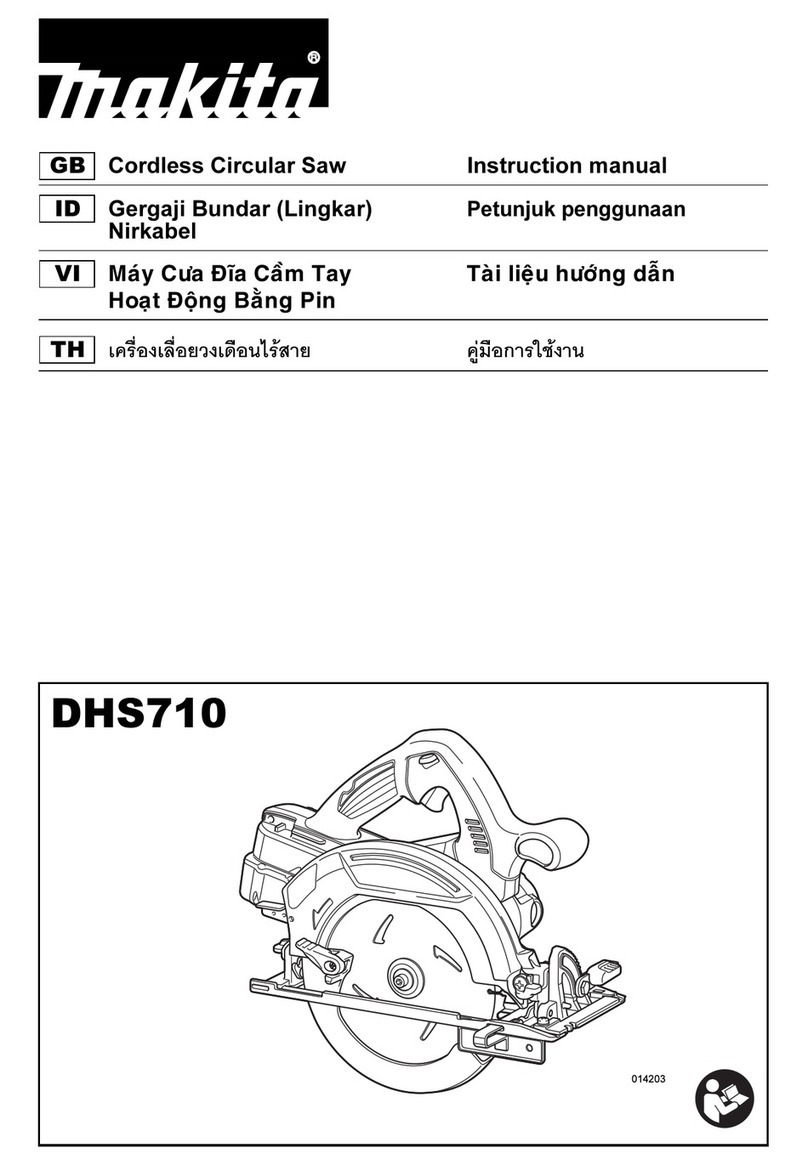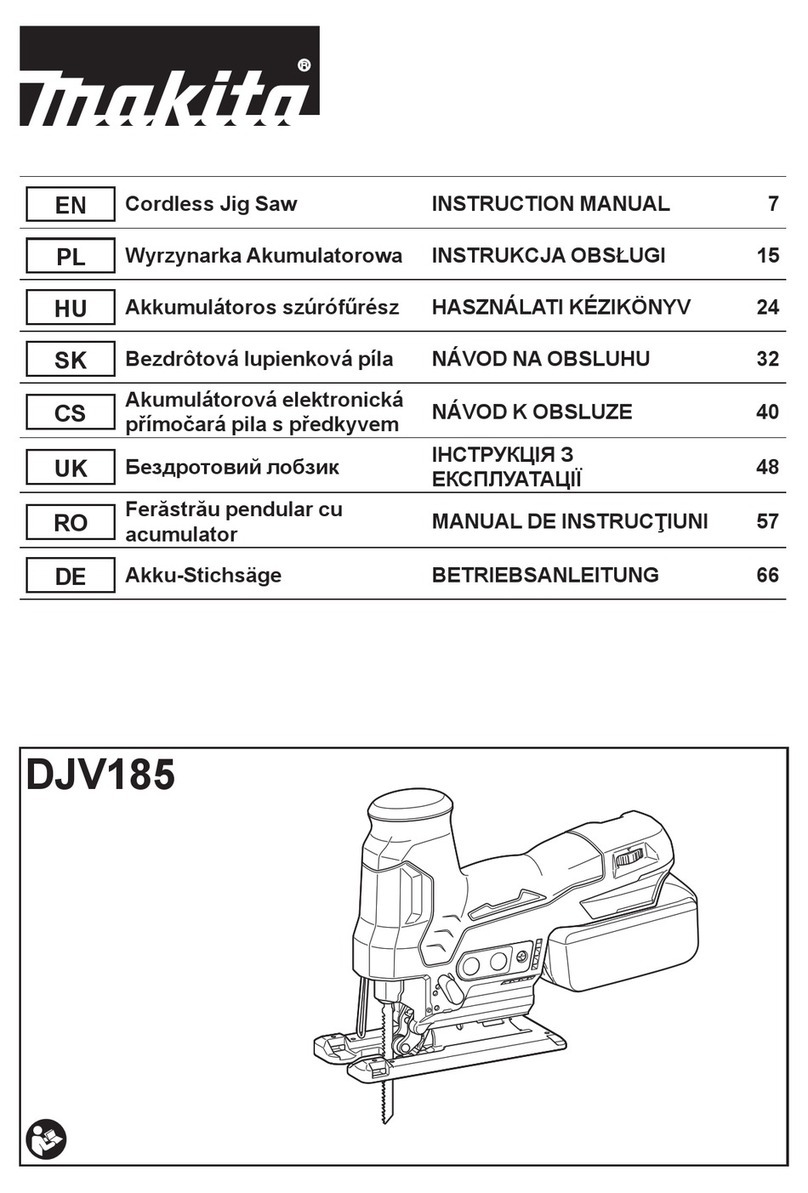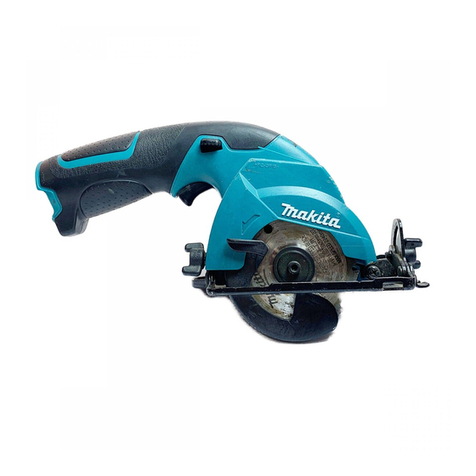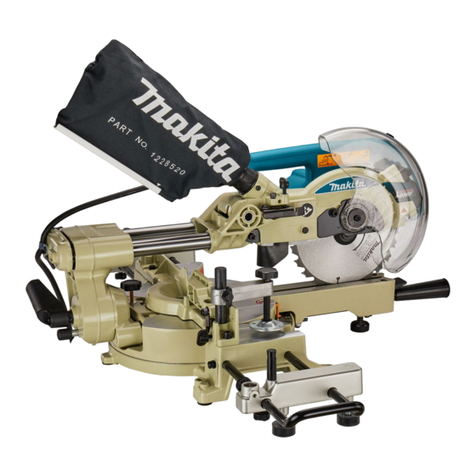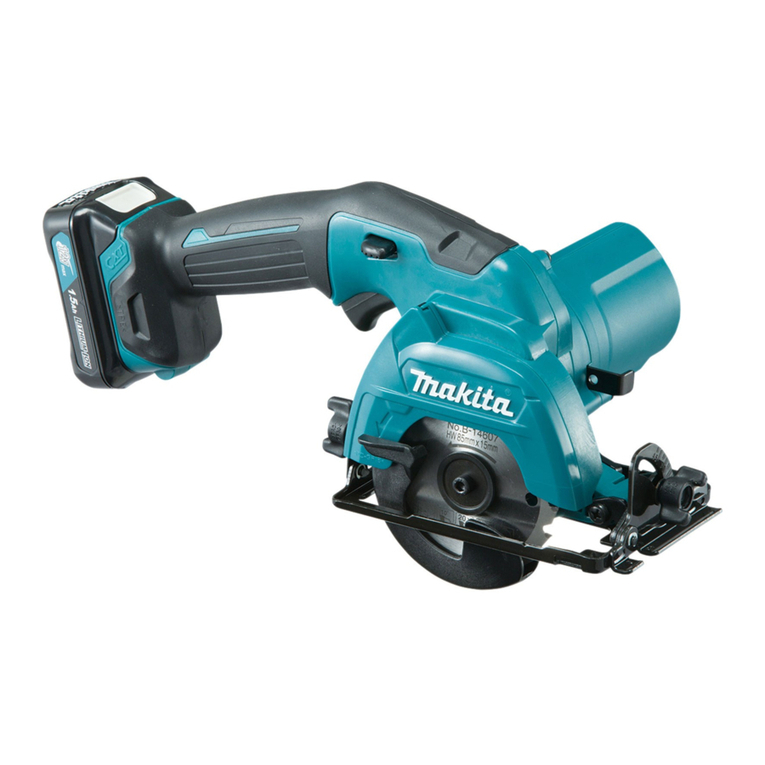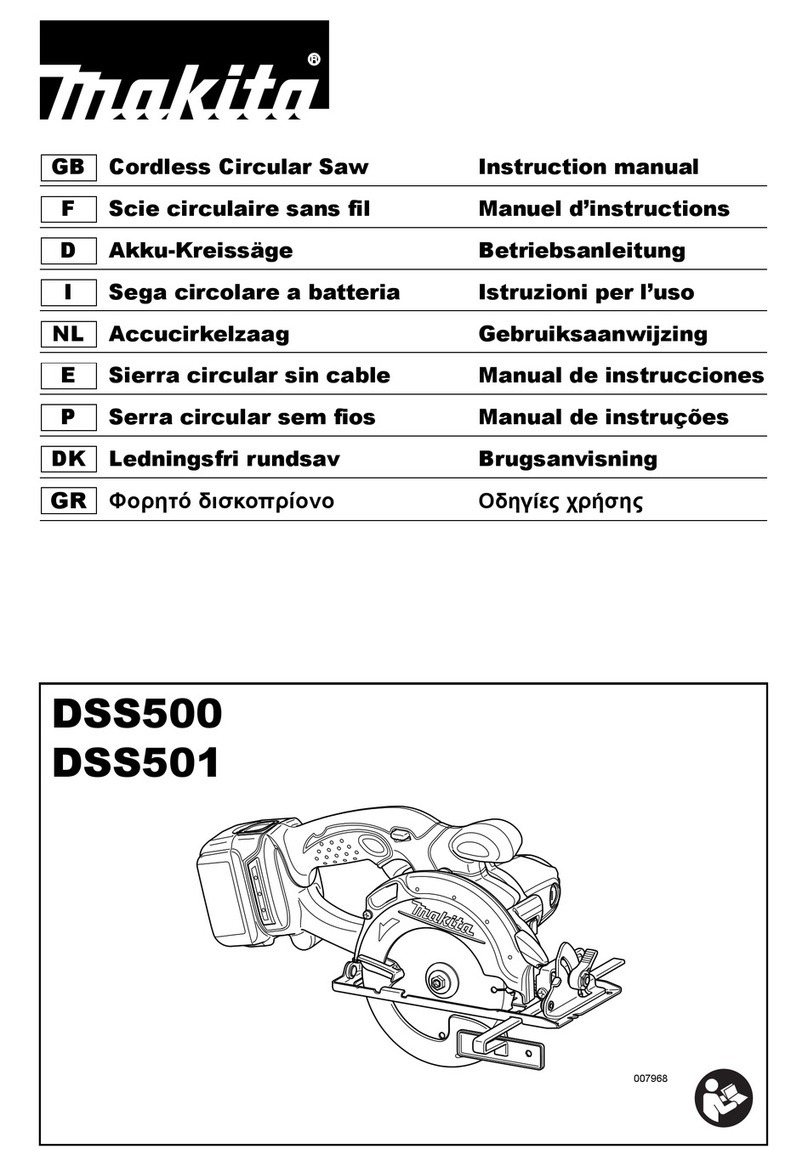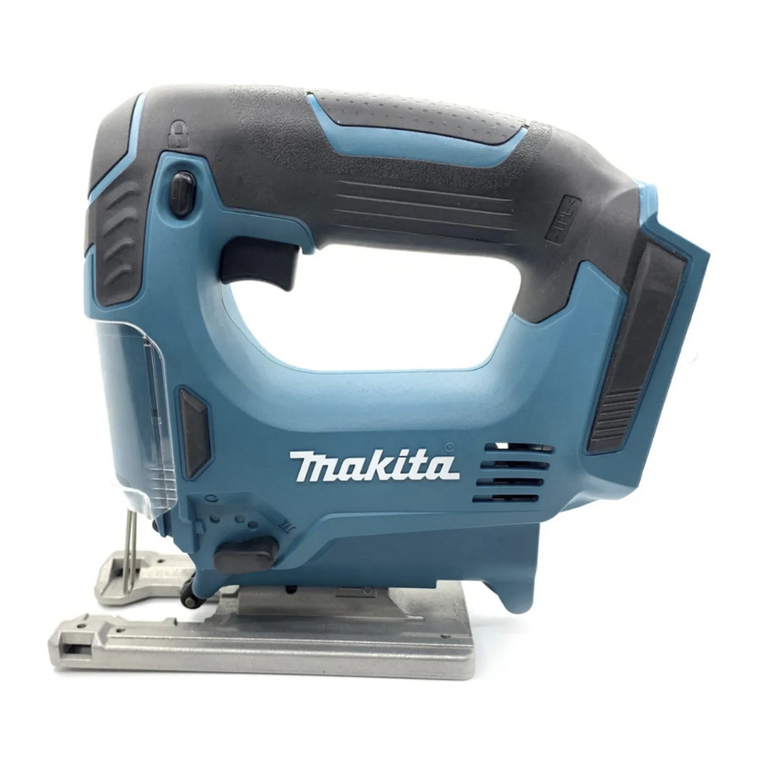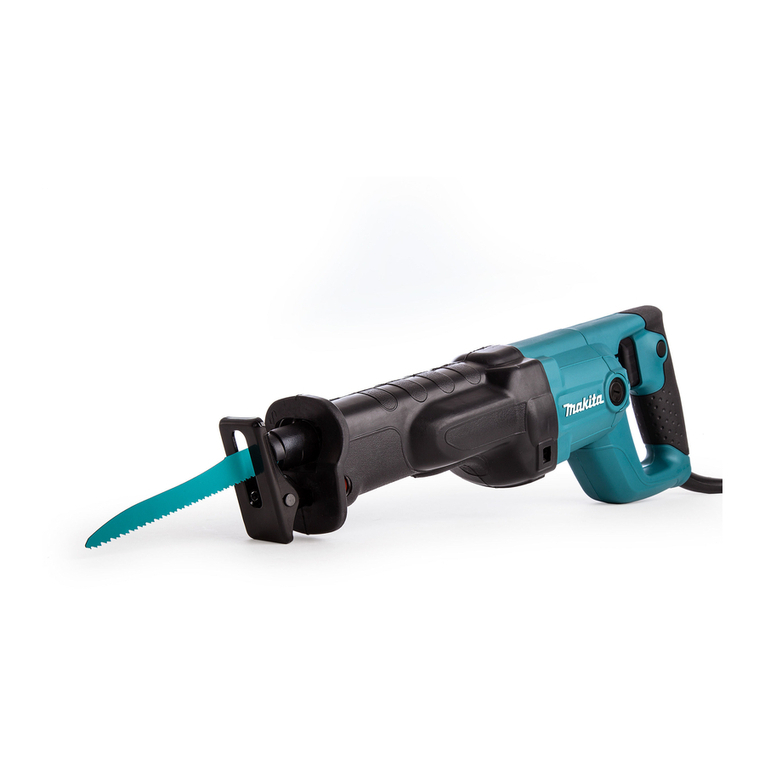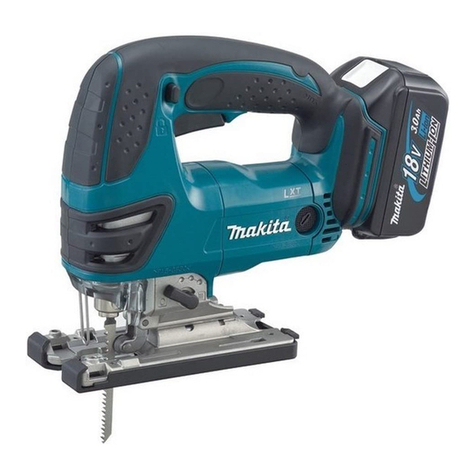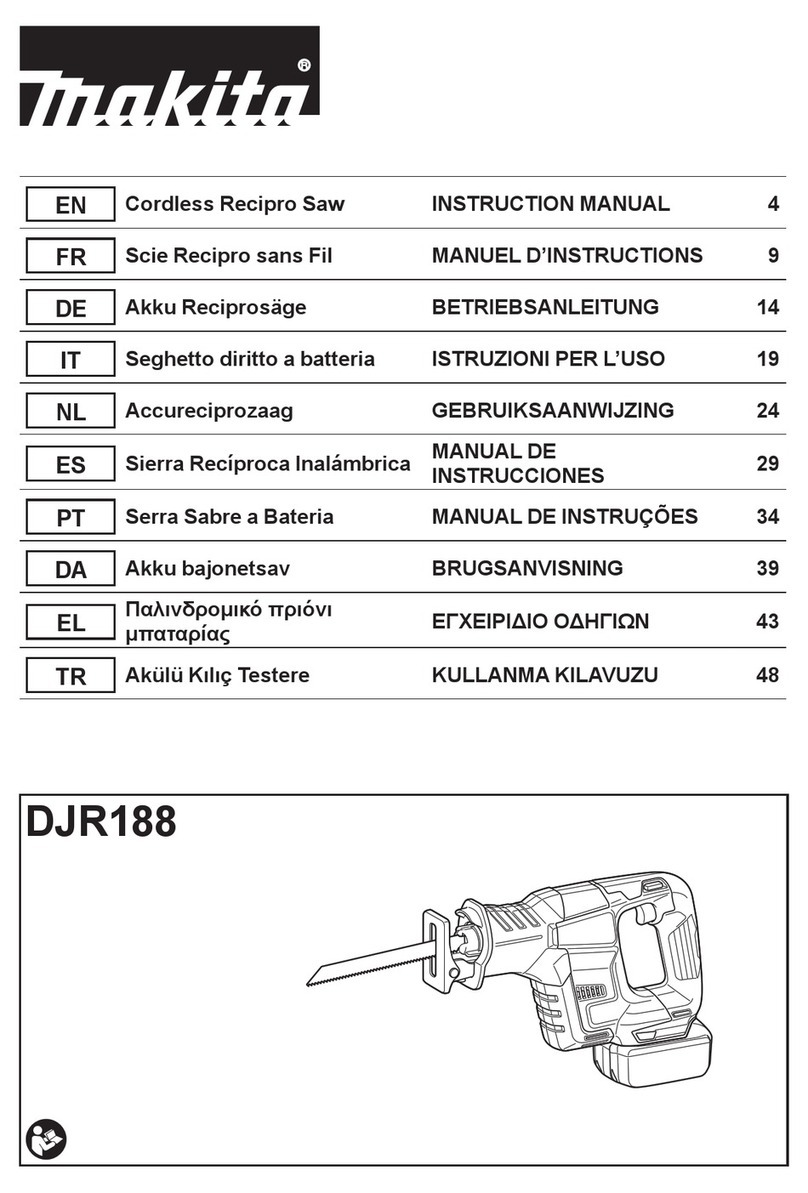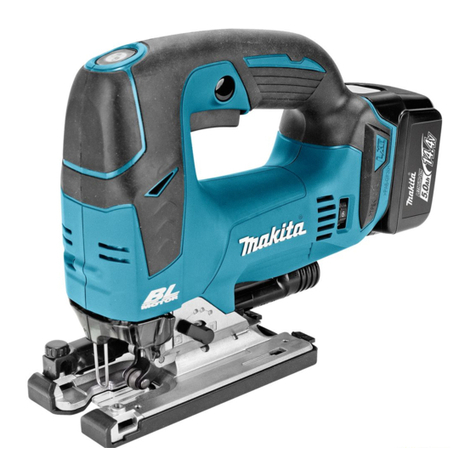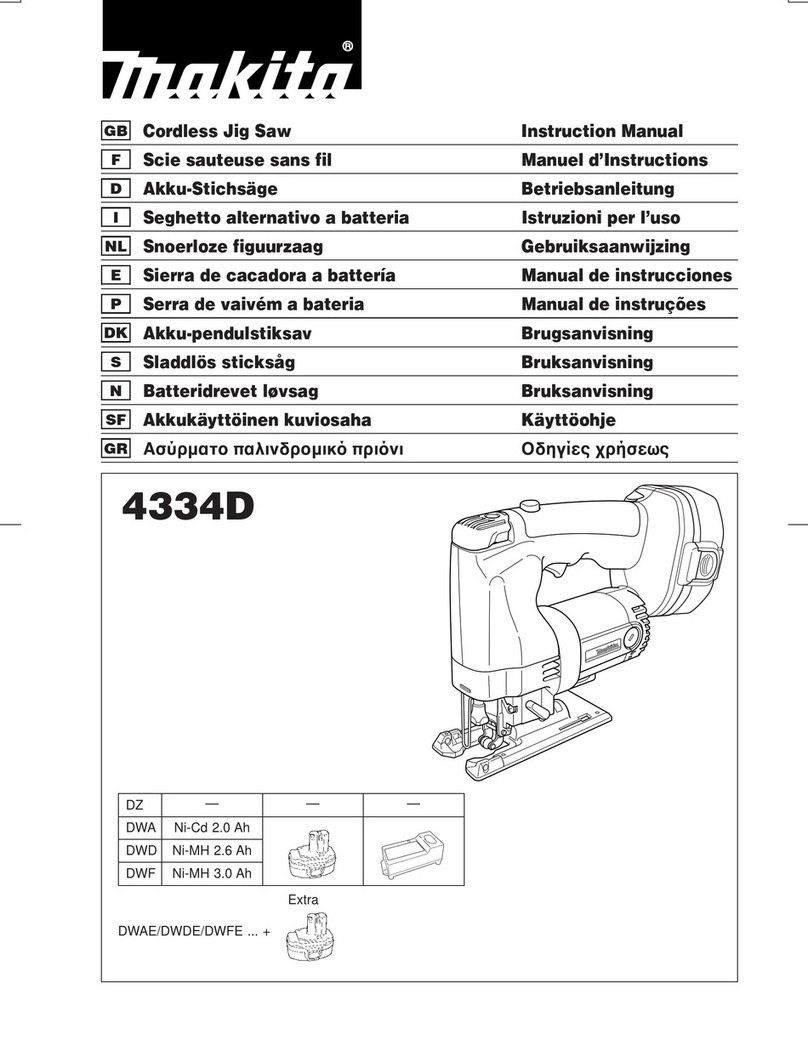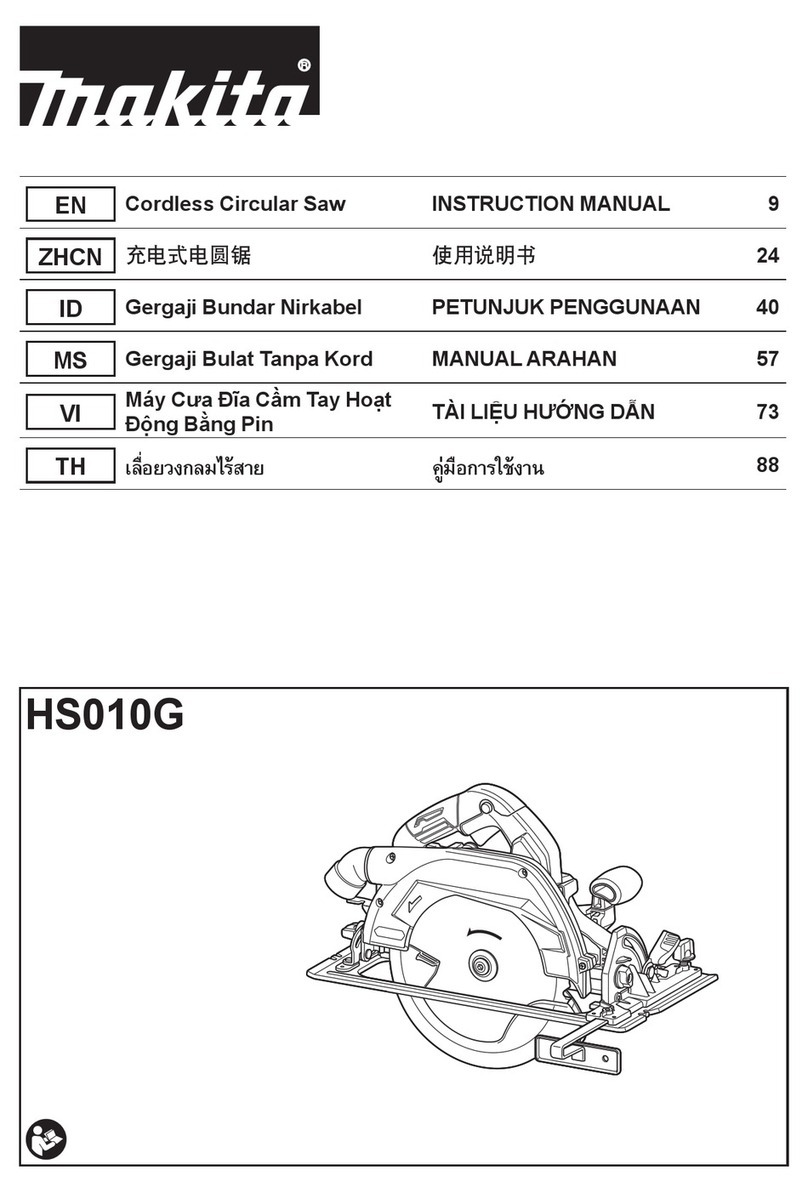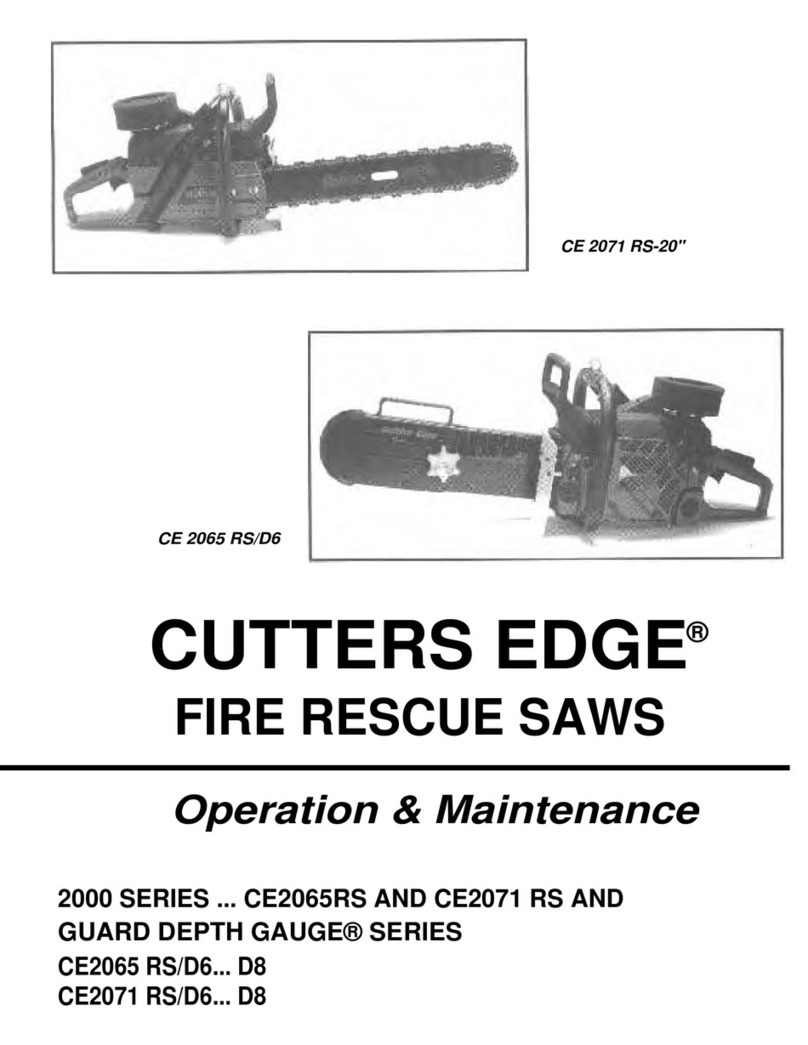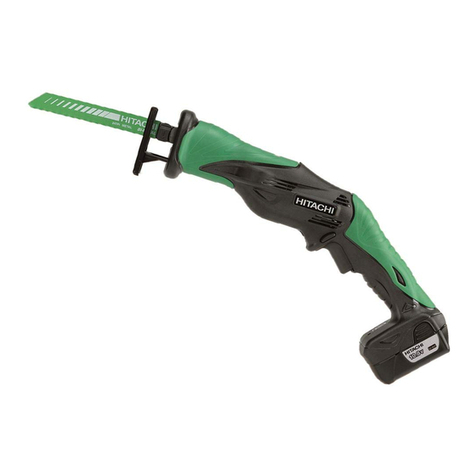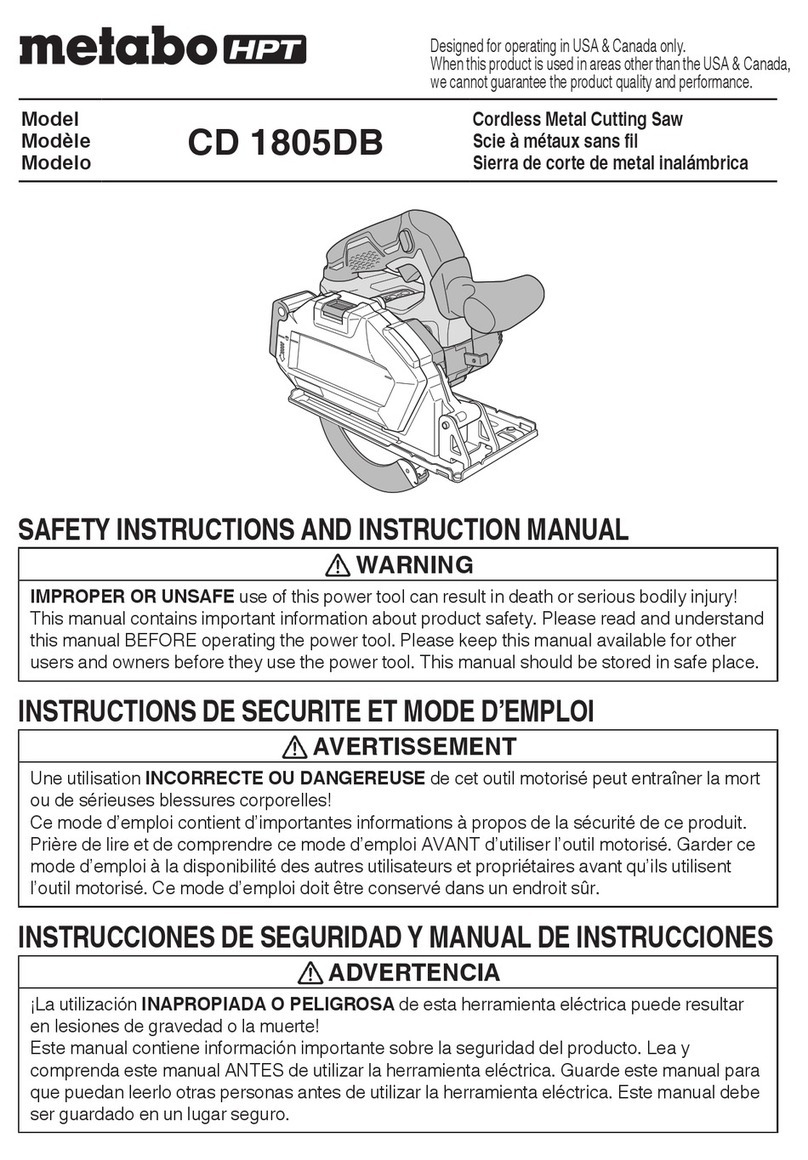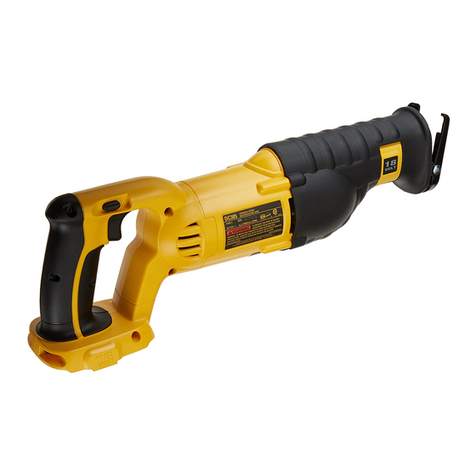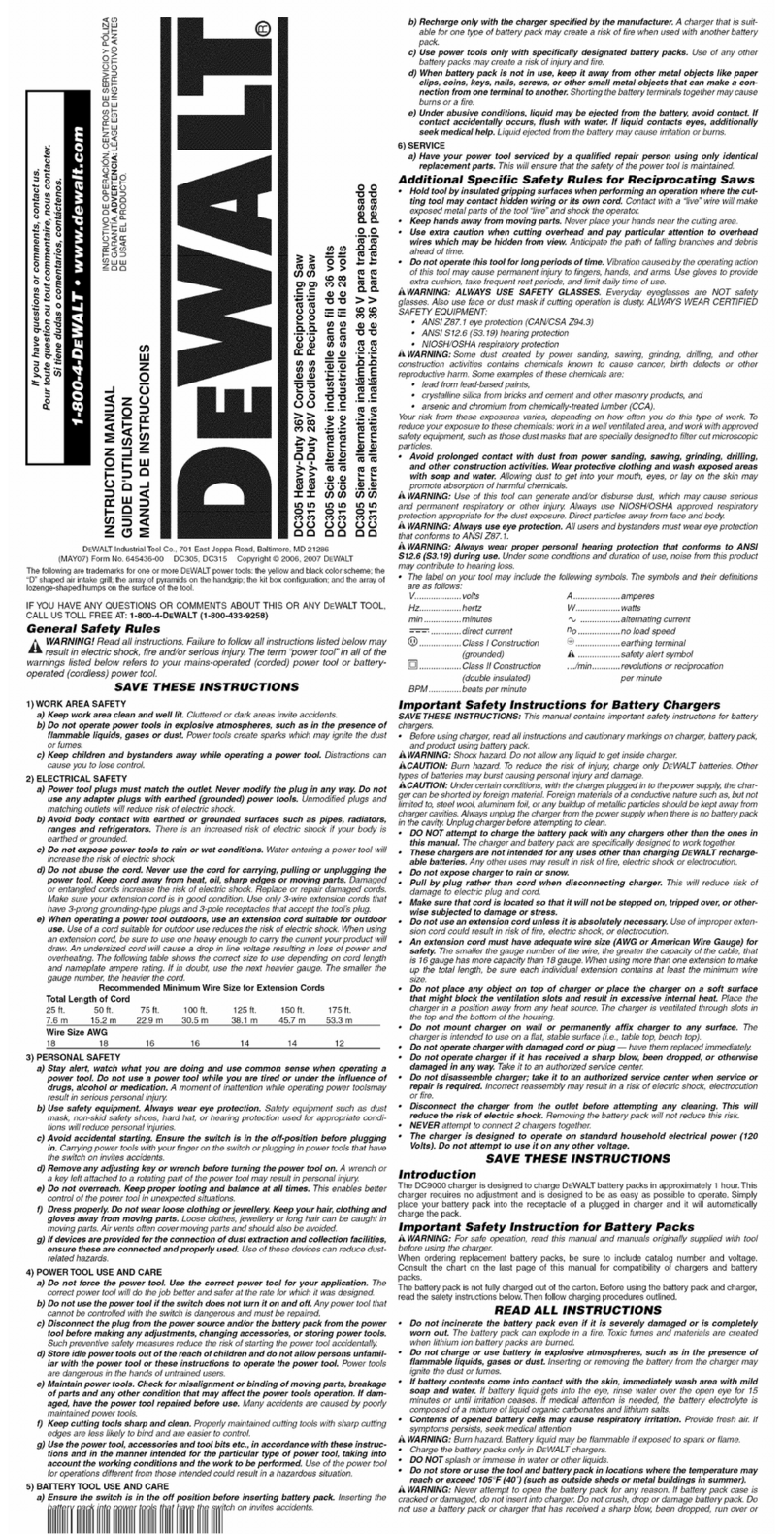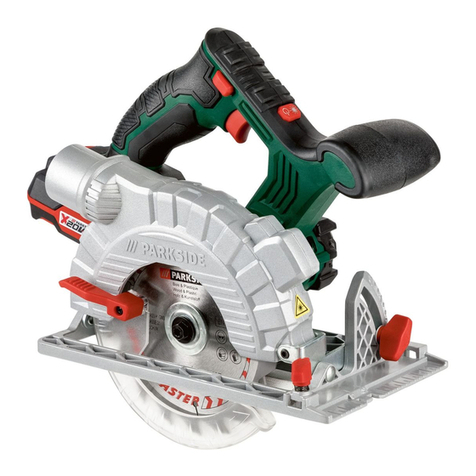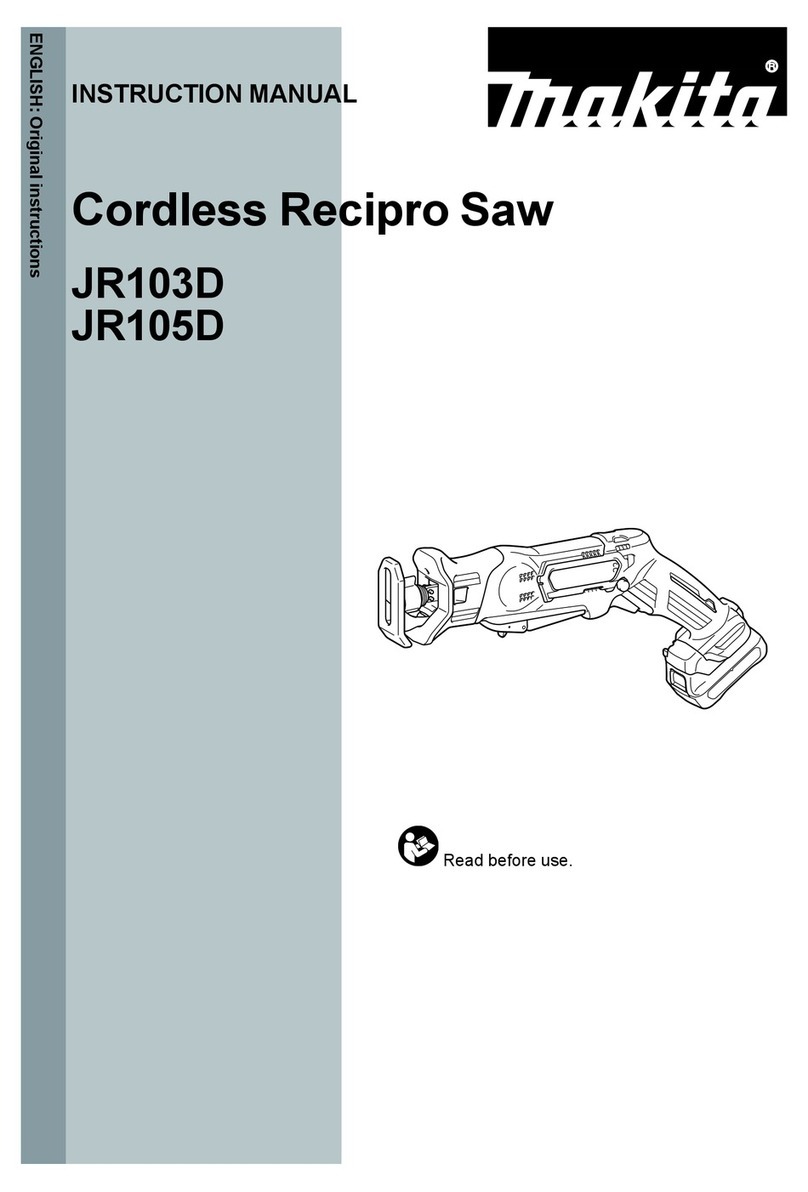7
Switch action (Fig. 3)
CAUTION:
• Before installing the battery cartridge into the tool,
always check to see that the switch trigger actuates
properly and returns to the “OFF” position when
released.
• When not operating the tool, depress the lock-off but-
ton from A side to lock the switch trigger in the OFF
position.
To prevent the switch trigger from accidentally pulled, the
lock-off button is provided.
To start the tool, depress the lock-off button from B side
and pull the switch trigger.
Tool speed is increased by increasing pressure on the
switch trigger. Release the switch trigger to stop. After
use, always press in the lock-off button from A side.
ASSEMBLY
CAUTION:
• Always be sure that the tool is switched off and the bat-
tery cartridge is removed before carrying out any work
on the tool.
Installing or removing saw blade (Fig. 4 & 5)
CAUTION:
• Always clean out all chips or foreign matter adhering to
the blade and/or blade holder. Failure to do so may
cause insufficient tightening of the blade, resulting in a
serious personal injury.
• Do not touch the blade or the workpiece immediately
after operation; they may be extremely hot and could
burn your skin.
• Always secure the blade firmly. Insufficient tightening of
the blade may cause blade breakage or serious per-
sonal injury.
• Use only B type blades. Using blades other than B type
blades causes insufficient tightening of the blade,
resulting in a serious personal injury.
To install the blade, loosen the bolt counterclockwise on
the blade holder with the hex wrench.
With the blade teeth facing forward, insert the blade into
the blade holder as far as it will go. Make sure that the
back edge of the blade fits into the roller. Then tighten the
bolt clockwise to secure the blade.
To remove the blade, follow the installation procedure in
reverse.
NOTE:
• Occasionally lubricate the roller.
Hex wrench storage (Fig. 6)
When not in use, store the hex wrench as shown in the
figure to keep it from being lost.
First, insert the hex wrench into the hole. Then push it
into the hook until it locked.
Dust cover (Fig. 7)
CAUTION:
• Always wear safety goggles even when operating the
tool with the dust cover lowered.
Lower the dust cover to prevent chips from flying. How-
ever, when making bevel cuts, raise it all the way.
OPERATION
CAUTION:
• Always hold the base flush with the workpiece. Failure
to do so may cause blade breakage, resulting in a seri-
ous injury.
• Advance the tool very slowly when cutting curves or
scrolling. Forcing the tool may cause a slanted cutting
surface and blade breakage.
Turn the tool on without the blade making any contact
and wait until the blade attains full speed. Then rest the
tool base flat on the workpiece and gently move the tool
forward along the previously marked cutting line. (Fig. 8)
Bevel cutting (Fig. 9, 10 & 11)
CAUTION:
• Always be sure that the tool is switched off and the bat-
tery cartridge is removed before tilting the base.
• Raise the dust cover all the way before making bevel
cuts.
With the base tilted, you can make bevel cuts at any
angle between 0° and 45° (left or right).
Loosen the bolt on the back of the base with the hex
wrench. Move the tool base so that the bolt is positioned
in the center of the cross-shaped slot in the base.
Tilt the base until the desired bevel angle is obtained.
The edge of the motor housing indicates the bevel angle
by graduations. Then tighten the bolt to secure the base.
Front flush cuts (Fig. 12)
Loosen the bolt on the back of the tool base with the hex
wrench, and slide the base all the way back. Then tighten
the bolt to secure the tool base.
Cutouts
Cutouts can be made with either of two methods A or B.
A) Boring a starting hole (Fig. 13)
For internal cutouts without a lead-in cut from an
edge, pre-drill a starting hole 12 mm or more in diam-
eter. Insert the blade into this hole to start your cut.
B) Plunge cutting (Fig. 14)
You need not bore a starting hole or make a lead-in
cut if you carefully do as follows.
1. Tilt the tool up on the front edge of the base with
the blade point positioned just above the work-
piece surface.
2. Apply pressure to the tool so that the front edge of
the base will not move when you switch on the tool
and gently lower the back end of the tool slowly.
3. As the blade pierces the workpiece, slowly lower
the base of the tool down onto the workpiece sur-
face.
4. Complete the cut in the normal manner.
Finishing edges (Fig. 15)
To trim edges or make dimensional adjustments, run the
blade lightly along the cut edges.
Metal cutting
Always use a suitable coolant (cutting oil) when cutting
metal. Failure to do so will cause significant blade wear.
The underside of the workpiece can be greased instead
of using a coolant.

